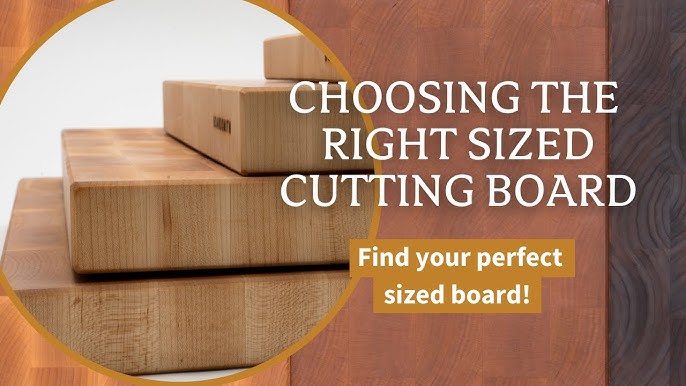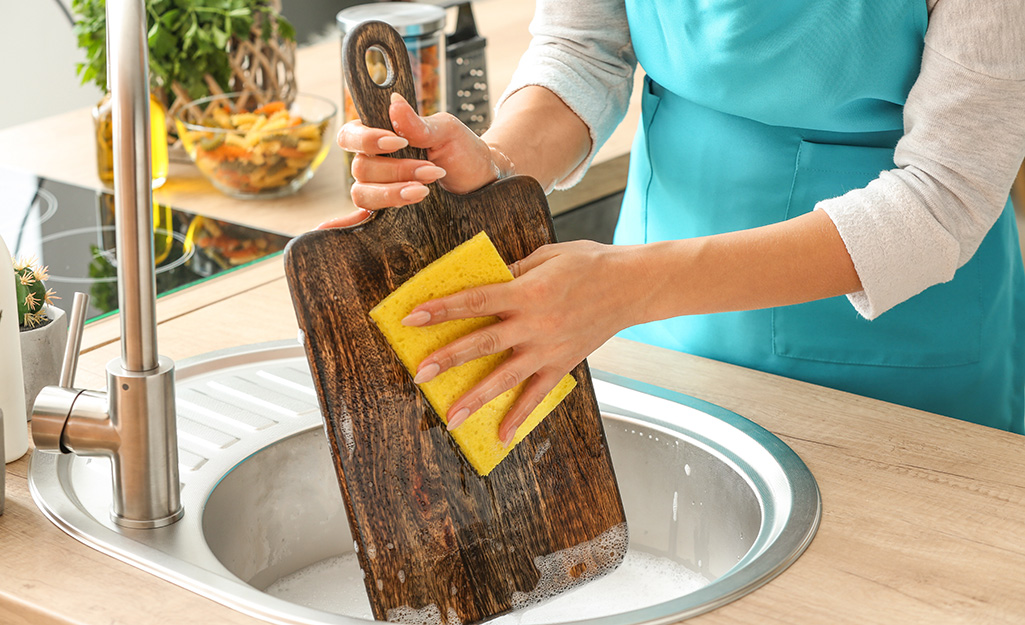
When I first started upgrading my kitchen tools, I didn’t think much about cutting boards. But as I got better knives and more serious about cooking, I began to see how much this humble tool impacts my overall experience. A quality cutting board isn’t just a surface for chopping—it’s a key player in making prep work faster, safer, and more enjoyable.
One of the biggest lessons I’ve learned is that the right cutting board can help extend the life of your knives. I used to wonder why my knives dulled so quickly, despite regular sharpening. It turned out that my old, glass cutting board was the culprit. Once I switched to a wooden board, I noticed an immediate difference. My knives stayed sharper longer, and chopping felt smoother and more precise.
How to Choose the Right Cutting Board for Longevity
I’ve found that durability is one of the most important factors when selecting a cutting board. Some of the cheaper options I tried early on—like thin plastic boards—warped within months. It was frustrating to deal with boards that didn’t sit flat on the counter or had deep grooves after minimal use. Here’s what I’ve learned about picking a board that lasts:
- End-Grain Wooden Boards: These are my personal favorite for longevity. The end-grain construction allows the wood fibers to “heal” themselves after cuts, making them less prone to damage. My maple end-grain board has been with me for years and still looks amazing with regular care.
- Plastic Boards: While they’re not as durable as wood, thick, high-quality plastic boards can last a long time if you don’t use overly sharp knives. I’ve had success with models that feature reinforced edges to prevent warping.
- Avoid Thin or Brittle Materials: Boards made from flimsy plastic or poorly glued bamboo layers are prone to splitting. It’s worth spending a bit more for a board that will stand the test of time.
:max_bytes(150000):strip_icc()/alr-john-boos-reversible-maple-wood-cutting-board-kim-shupe-03-5e1286bff39d47b39bdc2623c54e17bc.jpeg)
How to Choose the Right Cutting Board Based on Your Cooking Routine
Everyone’s kitchen habits are different, so the ideal cutting board for me might not be the same for you. To find the best match, think about what you prepare most often.
- For Busy Weeknight Cooks: If your meals are quick and involve a lot of chopping, I recommend a lightweight plastic board. It’s easy to clean, and you won’t worry about staining or odors if you’re rushing.
- For Serious Home Chefs: If you’re cooking elaborate meals or working with delicate ingredients, a larger wooden board is worth it. I love having ample space to organize ingredients while I prep.
- For Baking Enthusiasts: Cutting boards aren’t just for chopping. I use mine as a surface for rolling out dough or slicing baked goods. In these cases, a smooth, non-porous board works best.
- For Small Kitchens: If counter space is tight, look for a board with dual functionality, like one that fits over the sink or doubles as a serving tray.
The Downsides of Cutting Boards: Lessons From Experience
While I love my cutting boards, they aren’t without their quirks. For example, I learned the hard way that wood and moisture don’t mix. Early on, I left my wooden board soaking in the sink, which caused it to warp. Now, I’m careful to clean it immediately after use and let it air-dry upright.
Plastic boards, on the other hand, can develop deep grooves over time. I found myself replacing them more often than I’d like, especially after heavy use. These grooves can harbor bacteria, so I’ve made it a rule to sanitize my plastic boards regularly with a bleach solution.
Finally, there’s the issue of weight. My end-grain wooden board is hefty, which is great for stability but not so great when I need to move it. It’s not a dealbreaker for me, but it’s something to keep in mind if you prefer a lightweight option.
How to Choose the Right Cutting Board for Hosting and Presentation
One unexpected benefit I discovered with certain cutting boards is how great they are for entertaining. Wooden boards, in particular, double as beautiful serving platters. I’ve used mine to display cheese, charcuterie, and even desserts. Guests always comment on how rustic and elegant it looks.
If you’re looking for versatility, consider a board with a groove around the edge to catch juices. This is perfect for carving meats and serving them directly on the board without making a mess.

How to Clean and Maintain the Right Cutting Board
Proper care is essential to keep your cutting board looking and performing its best. Over time, I’ve developed a routine that works for me:
- Cleaning Wood Boards: I wash mine with warm soapy water immediately after use, then wipe it dry. Once a month, I rub it down with food-safe mineral oil to prevent drying out.
- Sanitizing Plastic Boards: These go straight into the dishwasher after each use. For deeper cleaning, I occasionally soak them in a diluted bleach solution to kill bacteria.
- Avoiding Harsh Chemicals: Whether it’s wood, bamboo, or plastic, I avoid harsh cleaners that can degrade the material. A mixture of lemon juice and salt works wonders for removing stains and odors naturally.
- Storage: I store my wooden boards upright to prevent warping and keep plastic boards stacked flat in a cabinet.
Why a Cutting Board Collection Might Be Worth It
Over the years, I’ve accumulated several cutting boards, each serving a unique purpose. I initially thought owning more than one was excessive, but now I can’t imagine working with just one. Here’s my breakdown of why a collection might be worth considering:
- Dedicated Boards for Specific Foods: I use separate boards for raw meats, veggies, and bread to avoid cross-contamination. It’s a small investment for better hygiene.
- Different Sizes for Different Tasks: My small board is perfect for slicing an apple, while my large one is ideal for prepping a whole meal.
- Backup Boards: It’s always handy to have an extra board for busy cooking days or when one is in the wash.
The Emotional Connection to a Good Cutting Board
This might sound odd, but I’ve developed a kind of sentimental attachment to my favorite cutting board. It’s been with me through countless meals—everything from weeknight dinners to special holiday feasts. It’s seen my kitchen skills improve, and there’s something satisfying about using a tool that feels like an old friend.
A well-loved cutting board also tells a story. The subtle knife marks, the rich patina of the wood—these imperfections remind me of the meals I’ve shared with family and friends. Choosing the right cutting board isn’t just about functionality; it’s about finding a tool that becomes a part of your kitchen journey.
FAQ: How to Choose the Right Cutting Board
Q: What is the best material for cutting boards if I use high-quality knives?
A: Wooden boards, particularly end-grain, are the most knife-friendly option. They cushion the blade and reduce dulling compared to harder materials like glass or bamboo.
Q: Can I put a wooden cutting board in the dishwasher?
A: No, wooden boards should never go in the dishwasher. The heat and moisture can cause them to warp and crack. Handwashing is the best way to clean them.
Q: How can I tell if my cutting board needs replacing?
A: If your board has deep grooves, cracks, or warping, it’s time to replace it. These imperfections can trap bacteria and make cleaning difficult.
Q: Are juice grooves necessary on a cutting board?
A: Juice grooves are helpful if you often carve meats or cut juicy fruits. They catch liquid and prevent it from spilling onto your countertop.
Q: What size cutting board should I buy?
A: A medium-sized board (about 12” x 18”) is versatile for most tasks. If you have space, a larger board is great for meal prep, while a smaller one is handy for quick jobs.